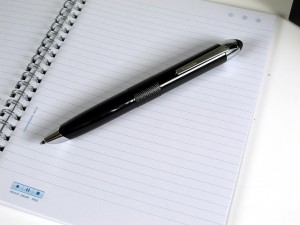So I have finished the first year of course work in my doctoral pursuit. 1 I have four more weeks of teaching my Montreal Writers lit course, which thus overlaps with the course on assessment that I begin teaching this coming week.
I know that what I’ve taken on is huge, and, I’ll admit, intimidating and impressive. Full-time course work as a student, full-time workload as a teacher (including work on implementation of our new policy on assessing student proficiency in the language of instruction, and work on the English Exit Exam committee), teaching at the university, part-time yoga instruction, my own fitness training (working to improve my 10K time, and maybe get to a half-marathon this year), and all the domestic stuff, as a wife, mother, and dog/cat lover. It’s a big list. Yet, day-to-day, I’ve managed to stay on top of everything…
…or so I thought.
Mid-March, my husband and I managed to get away, just the two of us, for a week of scuba and sunbathing in Cozumel2 I figured that week would be the reboot I needed to face the end of term in my doctoral courses, and power through the end of semester at the college. But a week after we got home, I was exhausted. So I took a long, hard look at what I was actually doing 3 and realized that while I might feel in control of my workload on a day-to-day basis, the bigger picture was that I was really, really, really busy, and maybe I don’t need to be. After all, as I keep telling my yoga classes, we need to listen to our bodies – and mine was tired. I had no energy for running. I wasn’t doing yoga on my own. I wasn’t sleeping well. I wasn’t waking up well.
So, I sat down with a lovely person in our human resources department, and found myself just babbling at her about everything I was doing, everything I was about to take one, everything I was being asked to do. And I realized that I really needed to take back some control, and take back some time. I’ve dropped one of my yoga classes, so I’ll only be teaching three times a week, at least for the summer. More importantly, I’ve applied for a voluntary workload reduction, so I’ll only be teaching one course each semester. I’ll still be working on the Exit Exam committee, but the language policy team has been disbanded, so that’s off my list.
I’ve also reflected on what I want to accomplish over the next few months, and created a timeline for myself. I have actually added a few things (such as more regular blogging!), but it’s loose enough that I feel it’s a good balance between having set goals and having space to breathe.
At the beginning of the last month of the semester, I do an exercise with my students and get them to note every assignment, every test, every reading, every soccer game, every family gathering, every work shift, etc., on a one-page calendar that covers the end of the semester. Seeing all those commitments on one page first feels terrifying, but then feels empowering. As I remind the students, we’ve all survived an end of semester before, with just as much stuff to do, but the calendar gives us a plan. It gives us control.
So, that’s what I did for myself. I made my decision for the workload reduction, and I set up my timeline, and took back the control I almost didn’t realize I’d lost.
Maybe I’ll even have time for a nap.
- I feel I should specify “course work,” because, as I’m sure anyone else who is going or has gone through the process can attest, the non-course work – reading, writing, more reading, more writing, thinking, talking, reading some more, planning, more writing – somehow takes on a life and momentum of its own, so that even when you want to take a break, your brain won’t shut off and just let you focus on that trashy novel or mindless TV show. ↩
- Hands down my favourite place to just relax and breathe, underwater or otherwise. ↩
- In the midst of this reflection period, by the way, three different colleagues approached me to suggest I step forward as coordinator of the Liberal Arts program. ↩

